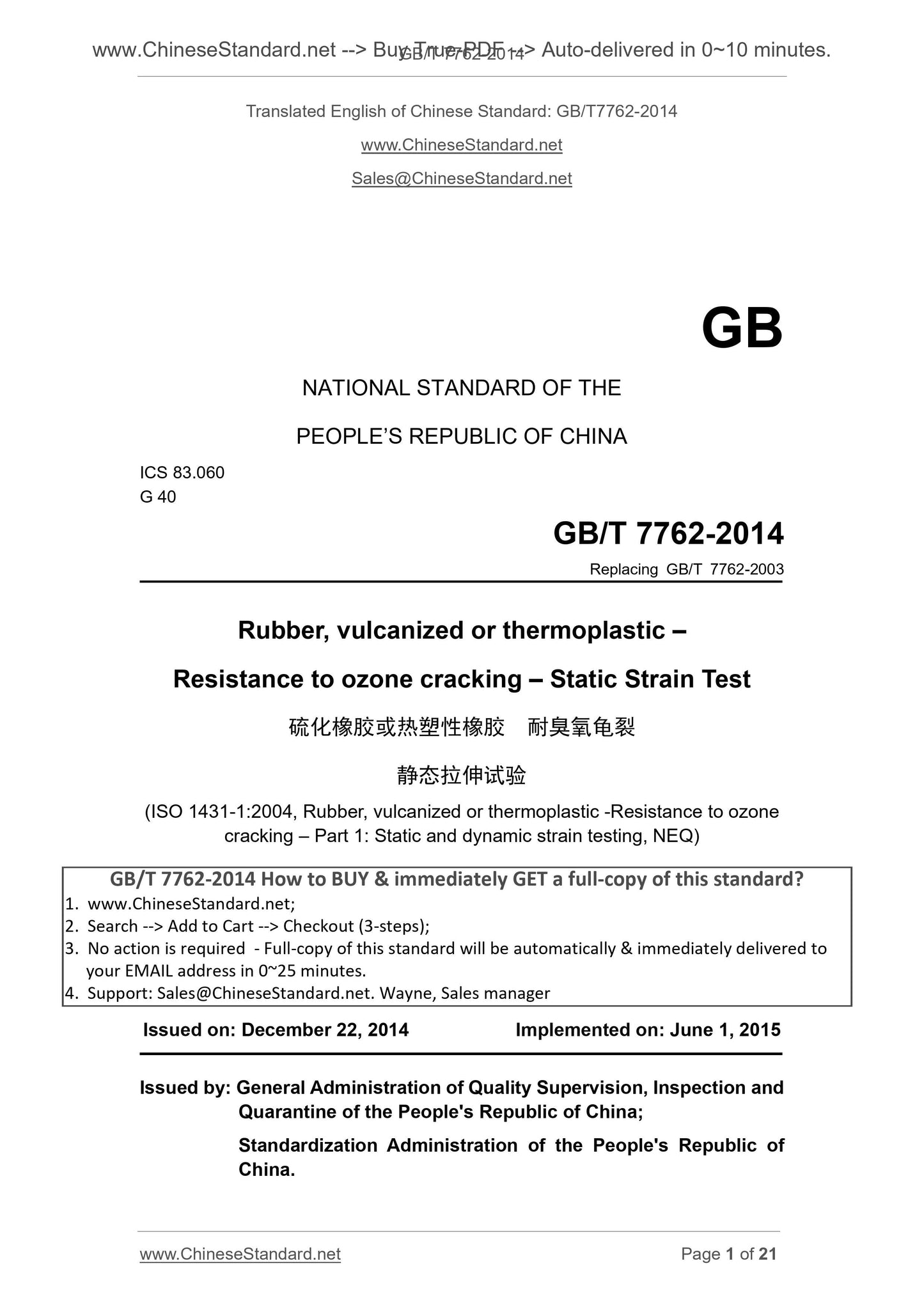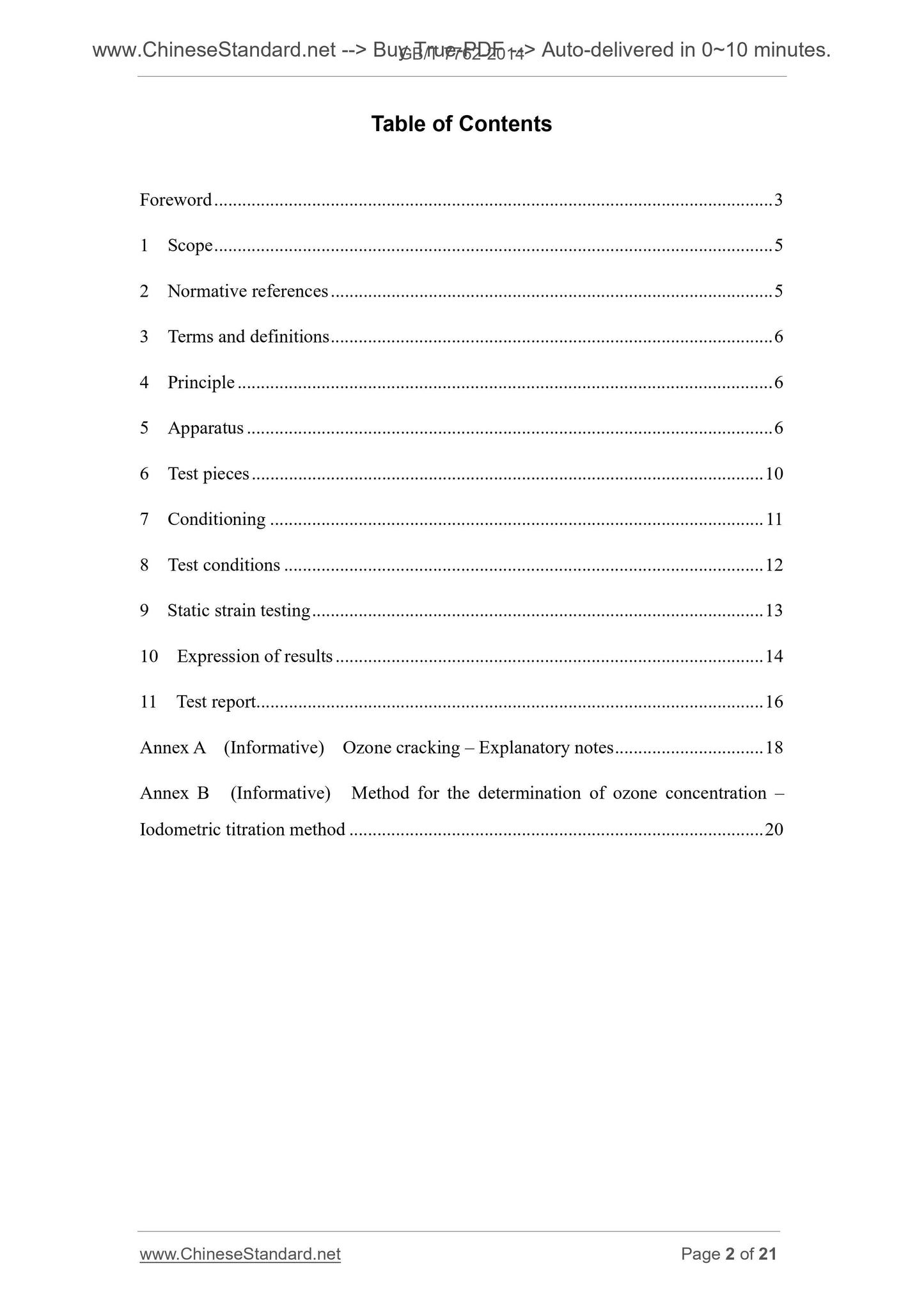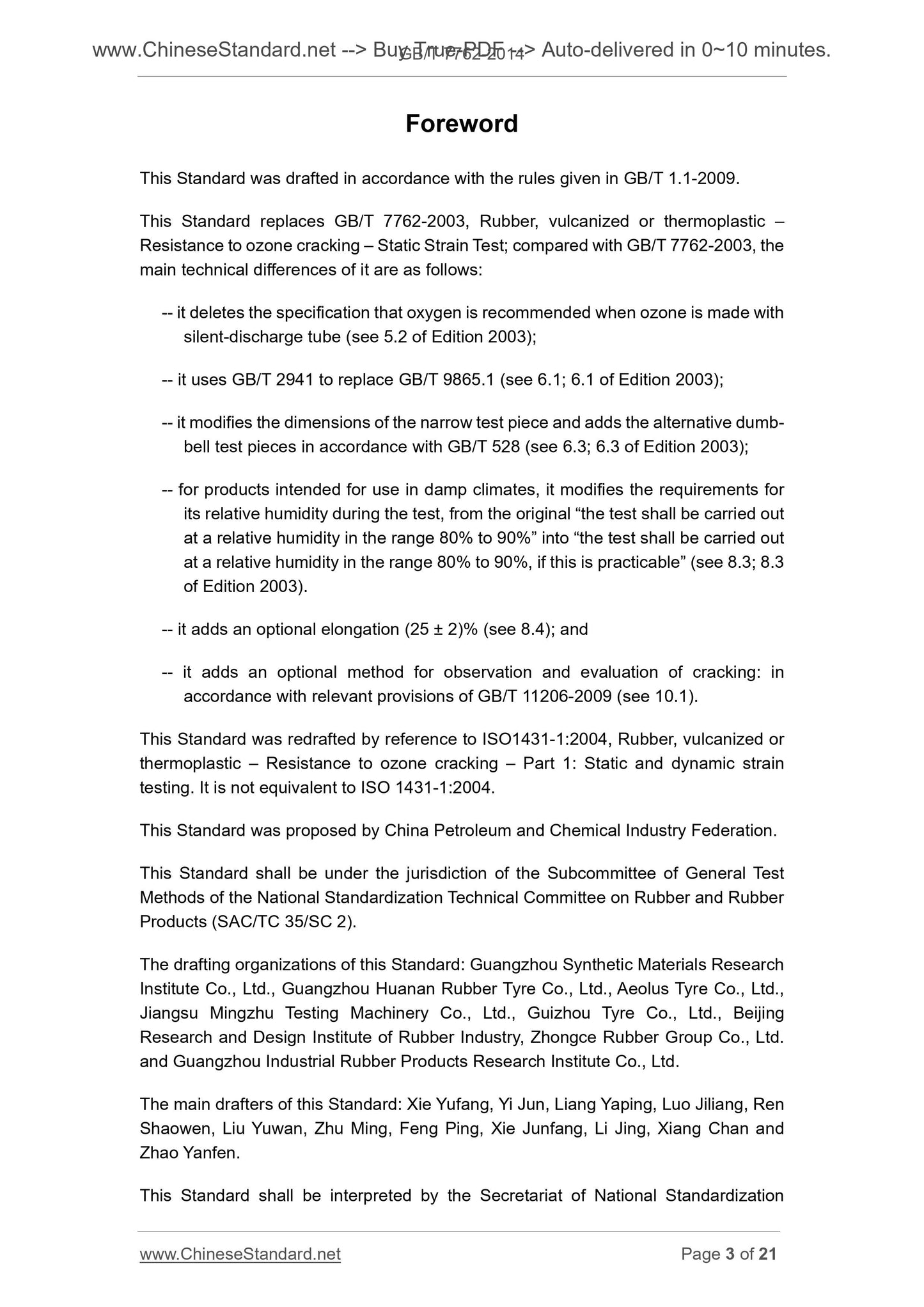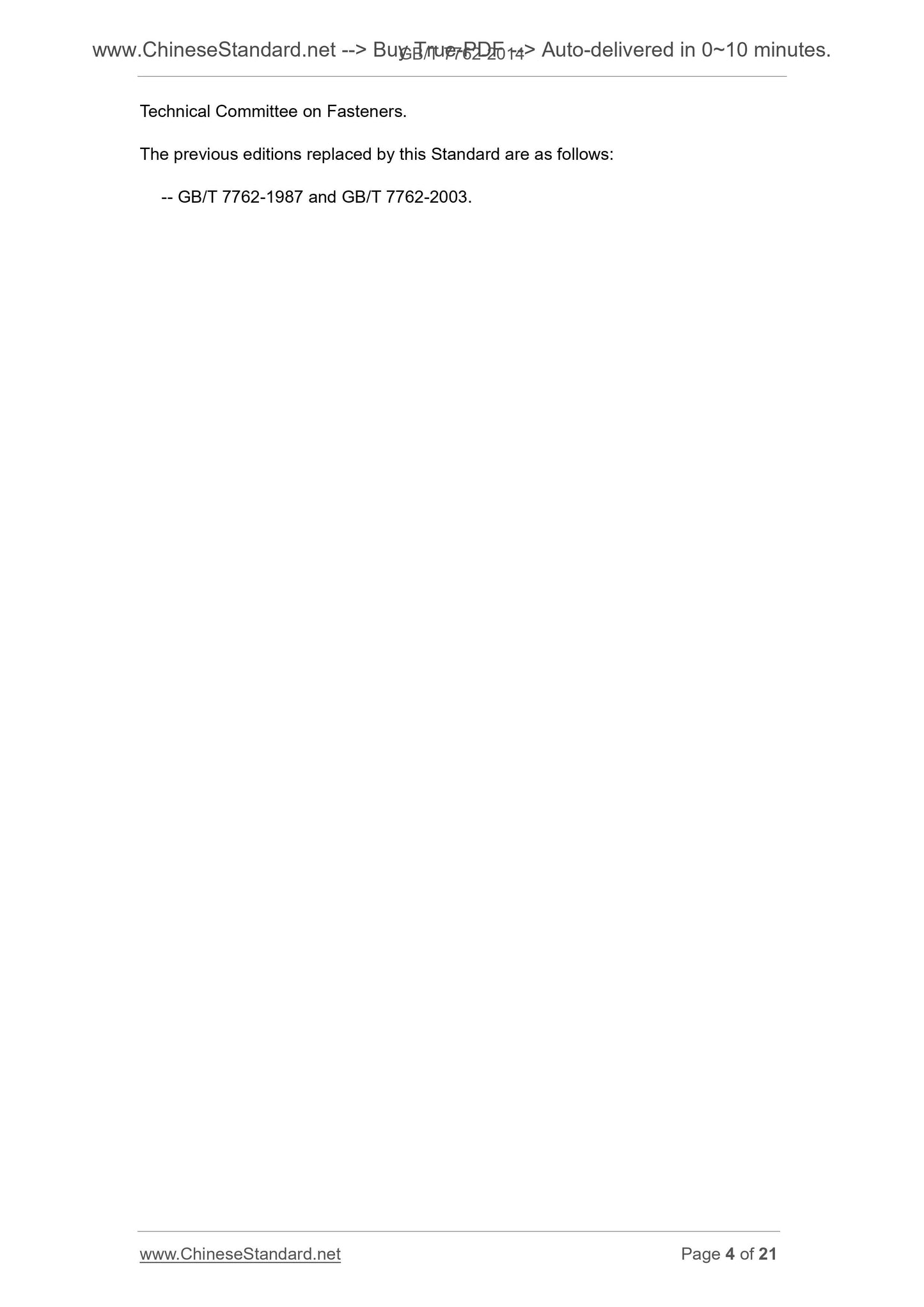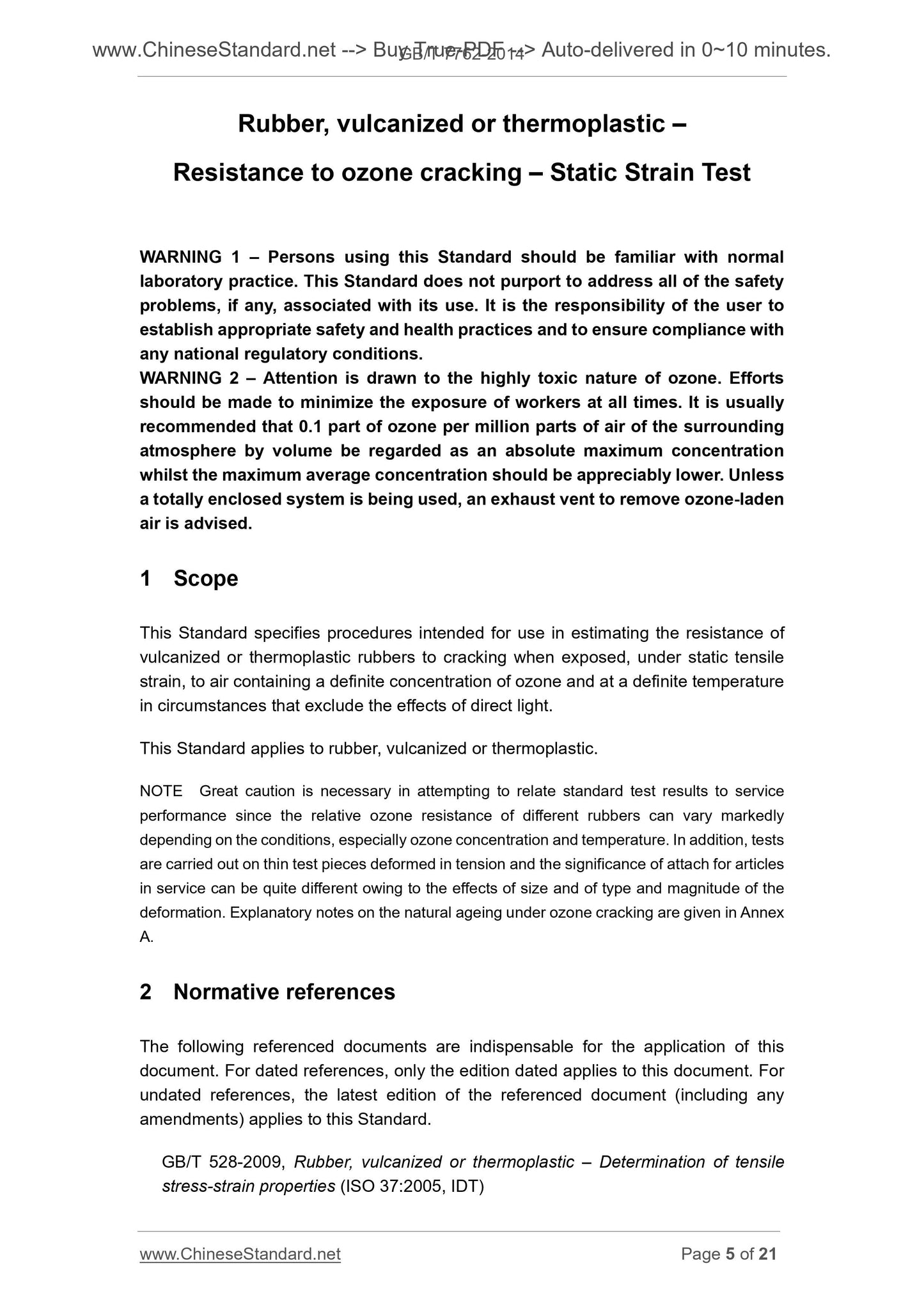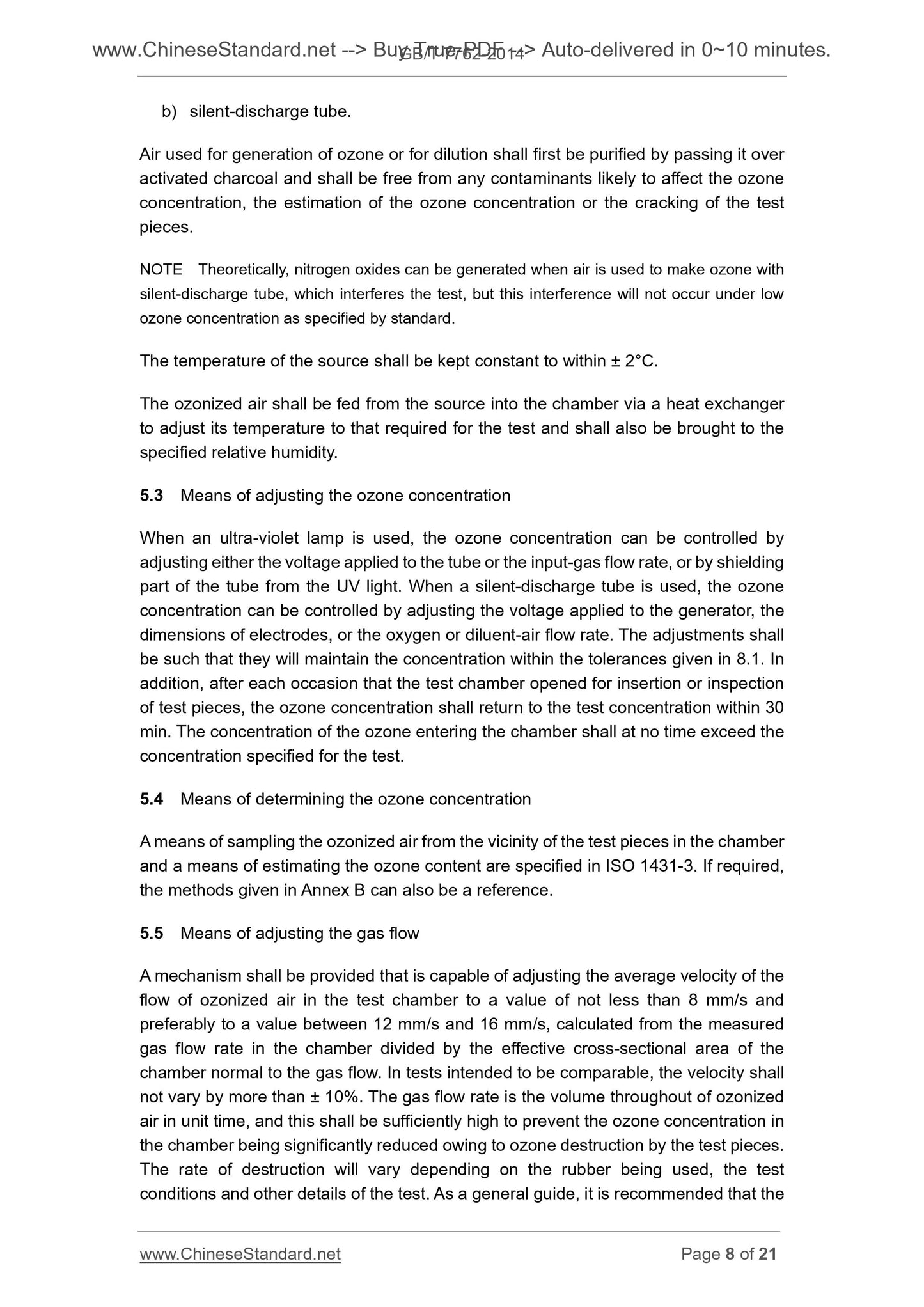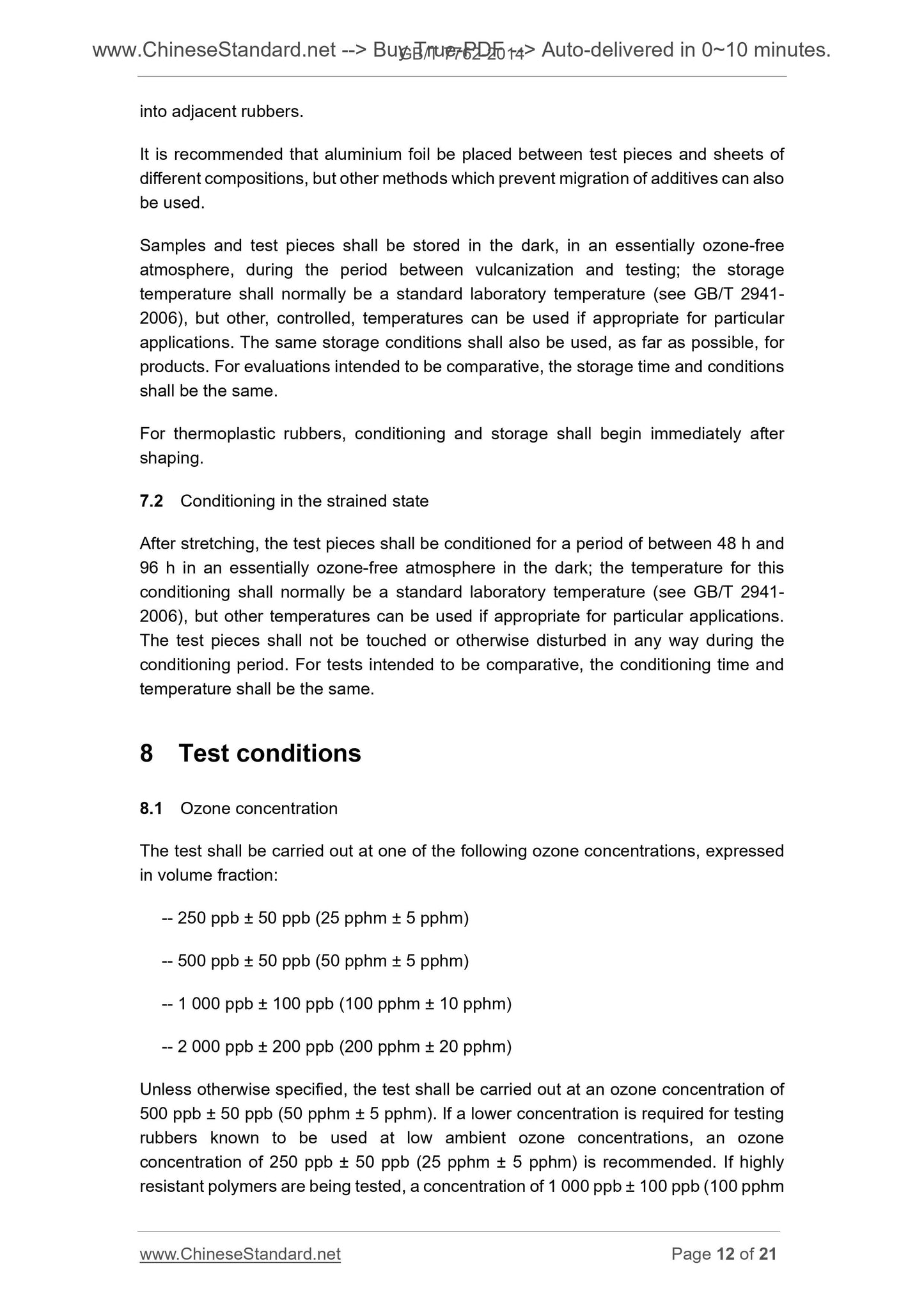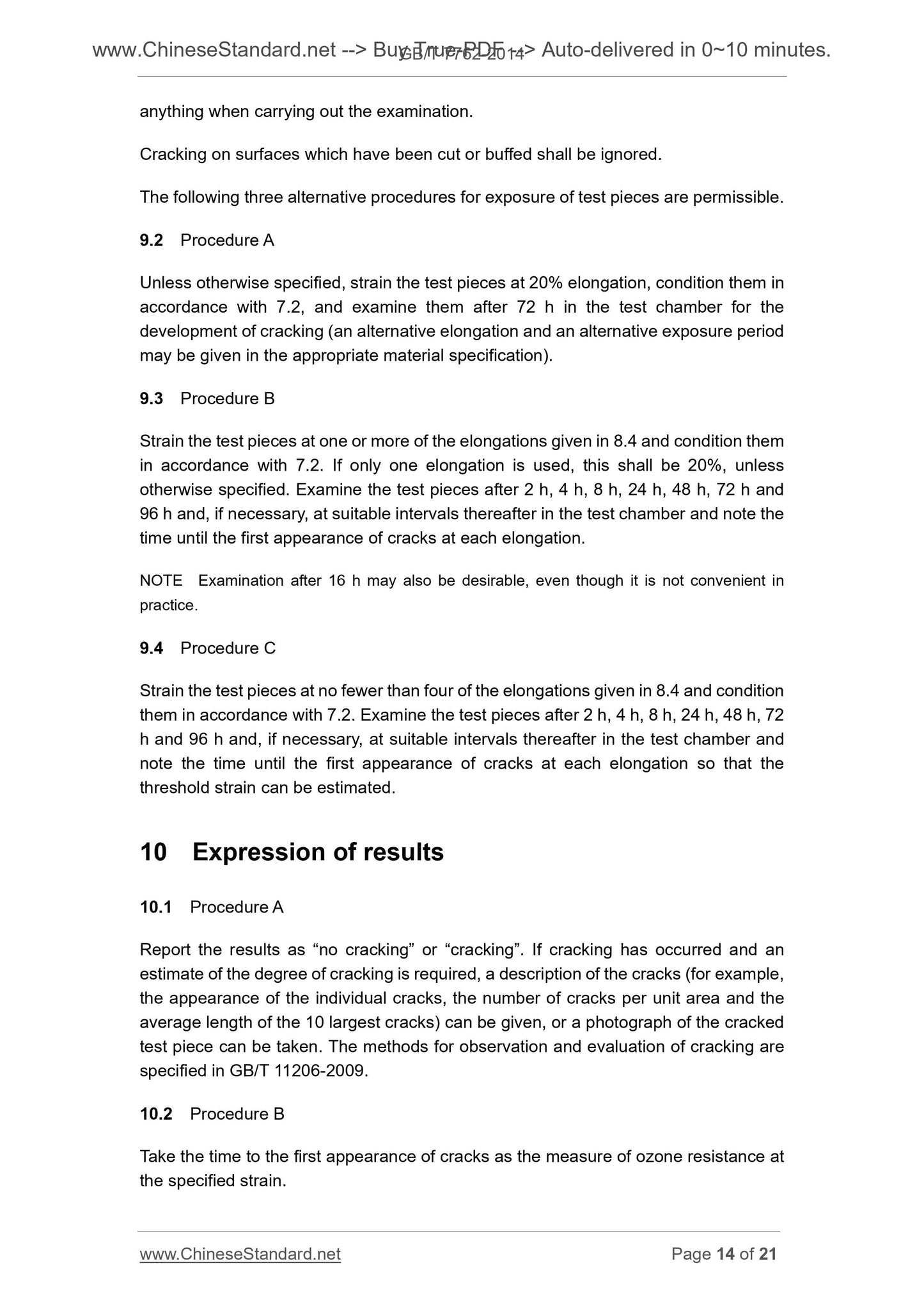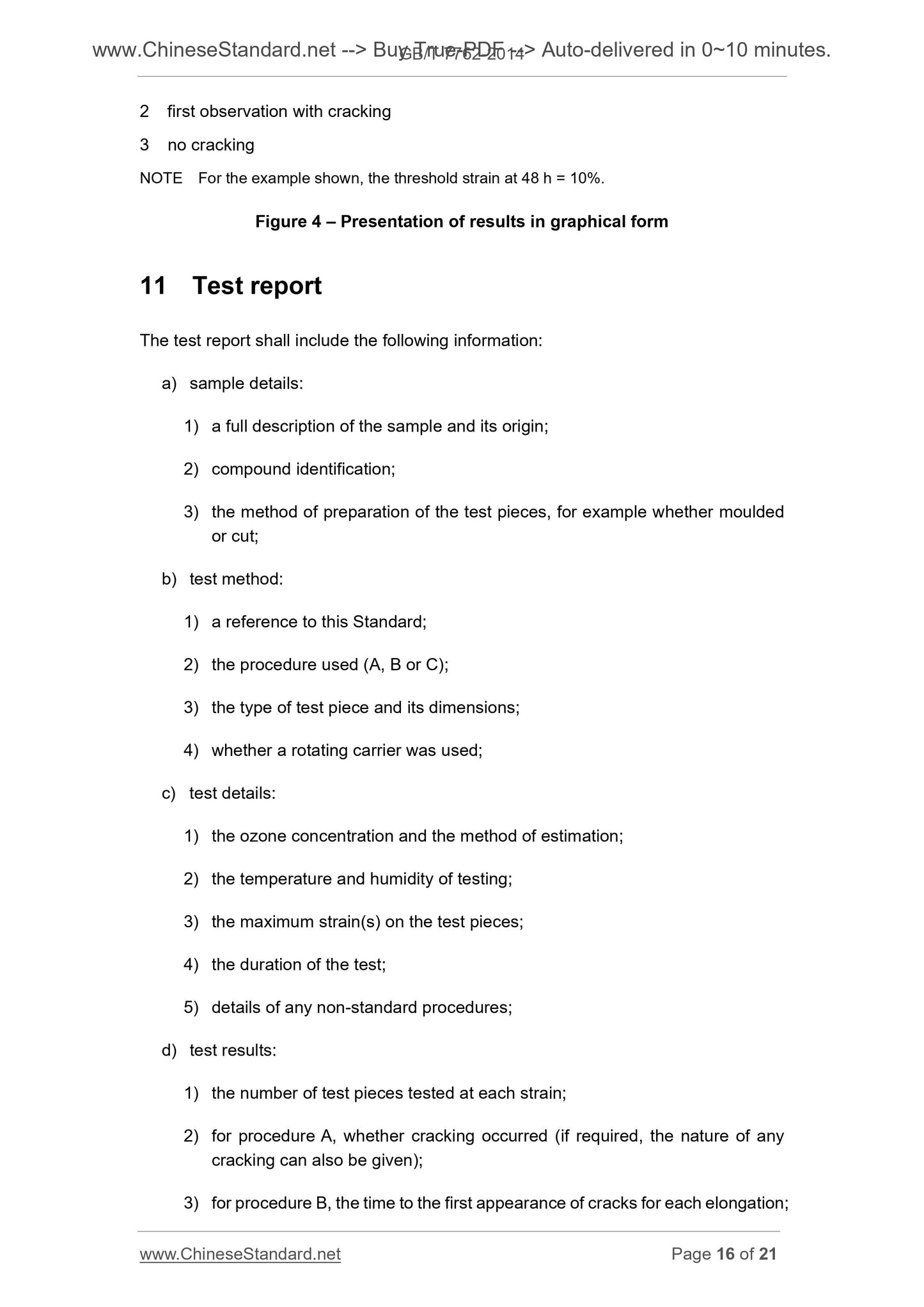1
/
of
9
www.ChineseStandard.us -- Field Test Asia Pte. Ltd.
GB/T 7762-2014 English PDF (GB/T7762-2014)
GB/T 7762-2014 English PDF (GB/T7762-2014)
Regular price
$85.00
Regular price
Sale price
$85.00
Unit price
/
per
Shipping calculated at checkout.
Couldn't load pickup availability
GB/T 7762-2014: Rubber, vulcanized or thermoplastic -- Resistance to ozone cracking -- Static strain test
Delivery: 9 seconds. Download (and Email) true-PDF + Invoice.Get Quotation: Click GB/T 7762-2014 (Self-service in 1-minute)
Newer / historical versions: GB/T 7762-2014
Preview True-PDF
Scope
This Standard specifies procedures intended for use in estimating the resistance ofvulcanized or thermoplastic rubbers to cracking when exposed, under static tensile
strain, to air containing a definite concentration of ozone and at a definite temperature
in circumstances that exclude the effects of direct light.
This Standard applies to rubber, vulcanized or thermoplastic.
NOTE Great caution is necessary in attempting to relate standard test results to service
performance since the relative ozone resistance of different rubbers can vary markedly
depending on the conditions, especially ozone concentration and temperature. In addition, tests
are carried out on thin test pieces deformed in tension and the significance of attach for articles
in service can be quite different owing to the effects of size and of type and magnitude of the
deformation. Explanatory notes on the natural ageing under ozone cracking are given in Annex
A.
Basic Data
| Standard ID | GB/T 7762-2014 (GB/T7762-2014) |
| Description (Translated English) | Rubber, vulcanized or thermoplastic -- Resistance to ozone cracking -- Static strain test |
| Sector / Industry | National Standard (Recommended) |
| Classification of Chinese Standard | G40 |
| Classification of International Standard | 83.060 |
| Word Count Estimation | 15,188 |
| Date of Issue | 12/22/2014 |
| Date of Implementation | 6/1/2015 |
| Older Standard (superseded by this standard) | GB/T 7762-2003 |
| Quoted Standard | GB/T 528-2009; GB/T 2941-2006; GB/T 11206-2009; ISO 1431-3 |
| Adopted Standard | ISO 1431-1-2004, NEQ |
| Regulation (derived from) | National Standards Bulletin 2014 No. 30 |
| Issuing agency(ies) | General Administration of Quality Supervision, Inspection and Quarantine of the People's Republic of China, Standardization Administration of the People's Republic of China |
| Summary | This Standard specifies vulcanized or thermoplastic rubber in the static tensile strain, is exposed to a certain concentration of ozone in the air and at a predetermined temperature and non-ozone-cracking test environment directly affect the light conduct |
Share
